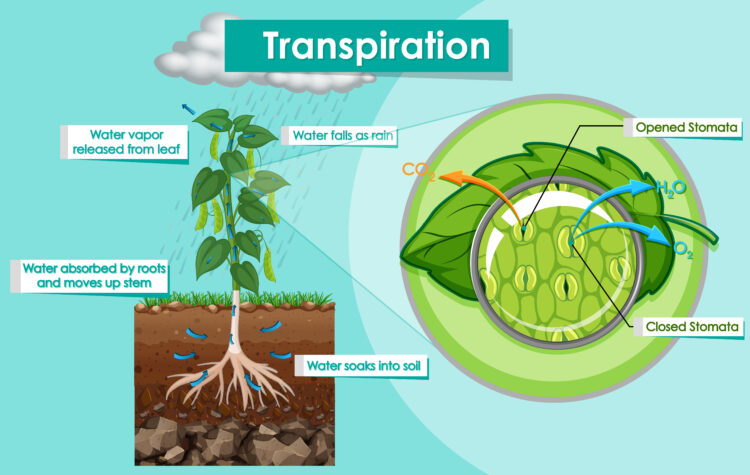Are Transpiration Rates Different for Different Species of Flowers
Plants take water up through their roots and, in the case of cut flowers, stems. Transpiration is the process where much of this water is released into the atmosphere through small pores called stomata. Transpiration has several important functions for plants, it drives a plants circulation delivering dissolved minerals from the plant’s roots to the rest of the plant. It is also important for cooling the plant and for maintaining water pressure throughout the plant, so it doesn’t wilt.
In this lab, students measure and compare the transpiration rates of different species of cut flowers. This lab can be coupled with the lab investigating the rate of the uptake of water for different species of flowers. If you do, put two of the same type of flower in each vase. One of each species of flower should have a baggie secured over it as outlined below.
From: 9 Fun Science Activities. Click here to find links to the other 8 activities!
Materials for Are Transpiration Rates Different for Different Species of Flowers
- Fresh cut flowers (e.g., carnations, hydrangeas, lilies)
- Clear plastic bags
- Rubber bands or twist ties
- Water
- Several clear vases or containers
Procedure for Are Transpiration Rates Different for Different Species of Flowers
- Place all the containers in a well-lit area away from direct sunlight, heat sources, or drafts.
- Secure a bag with a rubber band or twist tie around the stem of each flower below where it goes into the water.
- Place one flower in each vase. Or into the same vase if combining the two labs.
- Check the baggies after 24 hours. Which flower has the most moisture inside the baggie? How does this amount of moisture in each baggy track with changes in the water level in each vase.
Check out more articles through the Ask Blair Page on this website. This article was submitted in April 2023 and was not published in the July issue of the SEA Homeschoolers Magazine.
Do you have a question for the fan-favorite column “Ask Blair” found in The SEA Homeschoolers Magazine? Please use this form to submit your homeschooling questions. The SEA team will select a few questions to be answered by SEA Homeschoolers Founder & Magazine Editor, Blair Lee, in each quarterly issue. Due to space, not all questions will be published in the magazine. Those that come in shortly after a magazine issue has been published will go on this page. These are important questions and we want to answer them for you in a timely way. Please be sure to include all pertinent information relevant to your question – examples: learner ages, grade levels, preferred resource format, topics of interest, preferred homeschool methodologies, state requirements you’re trying to meet, learning challenges, etc.
Submit your homeschooling question through this link.

